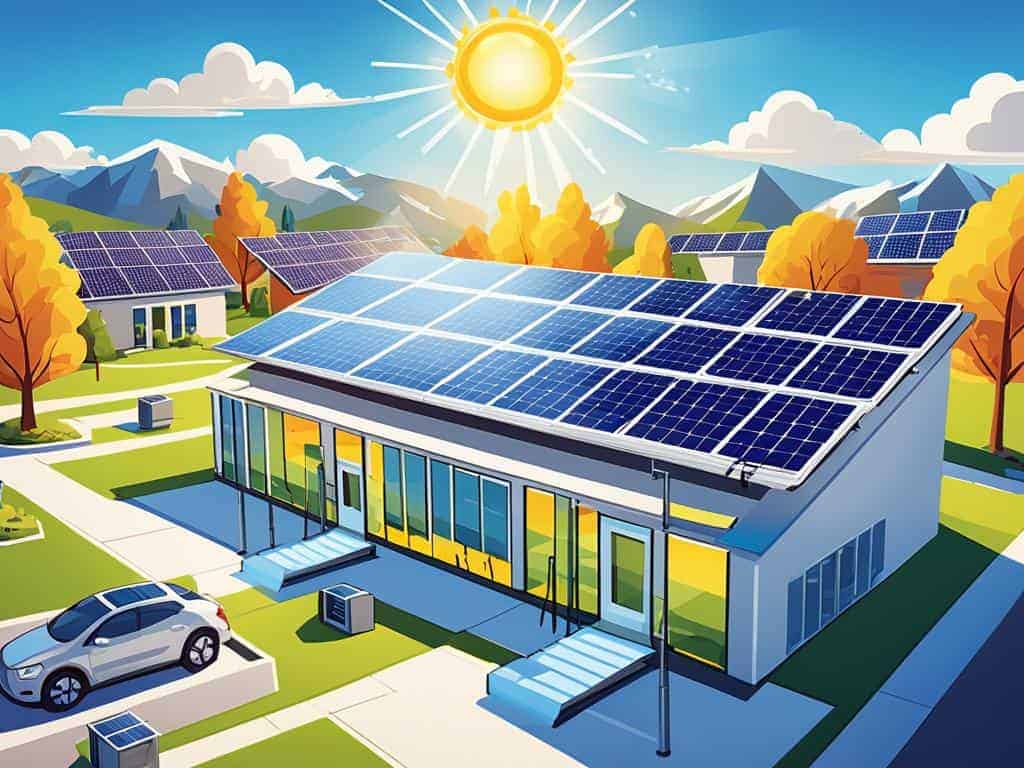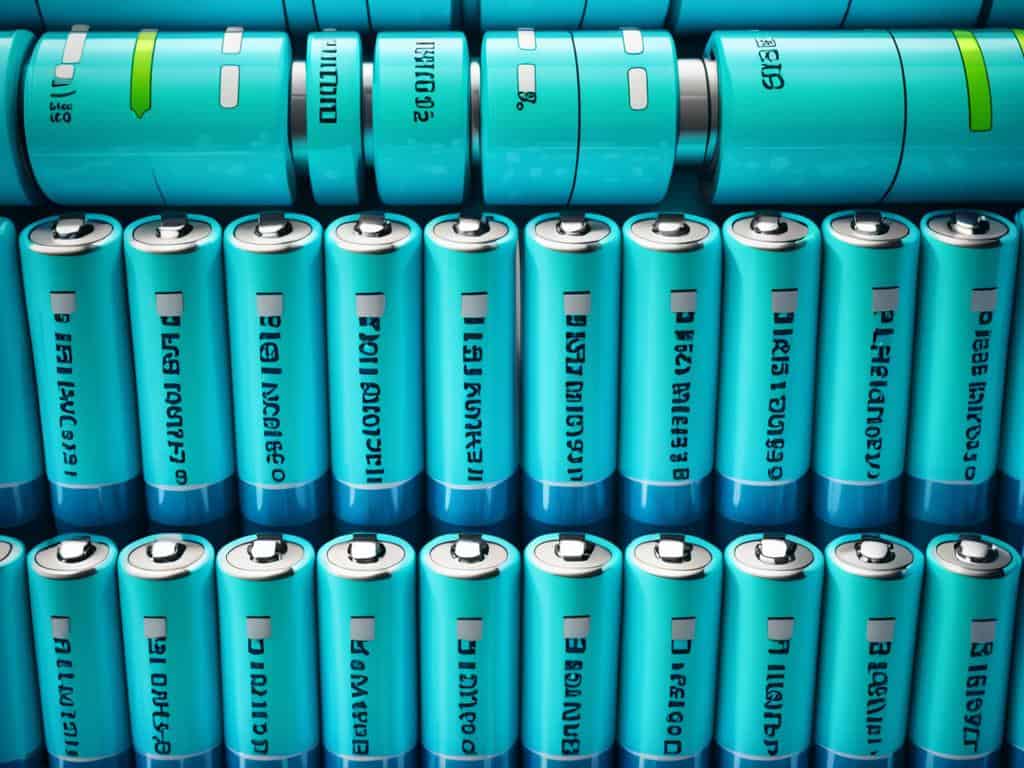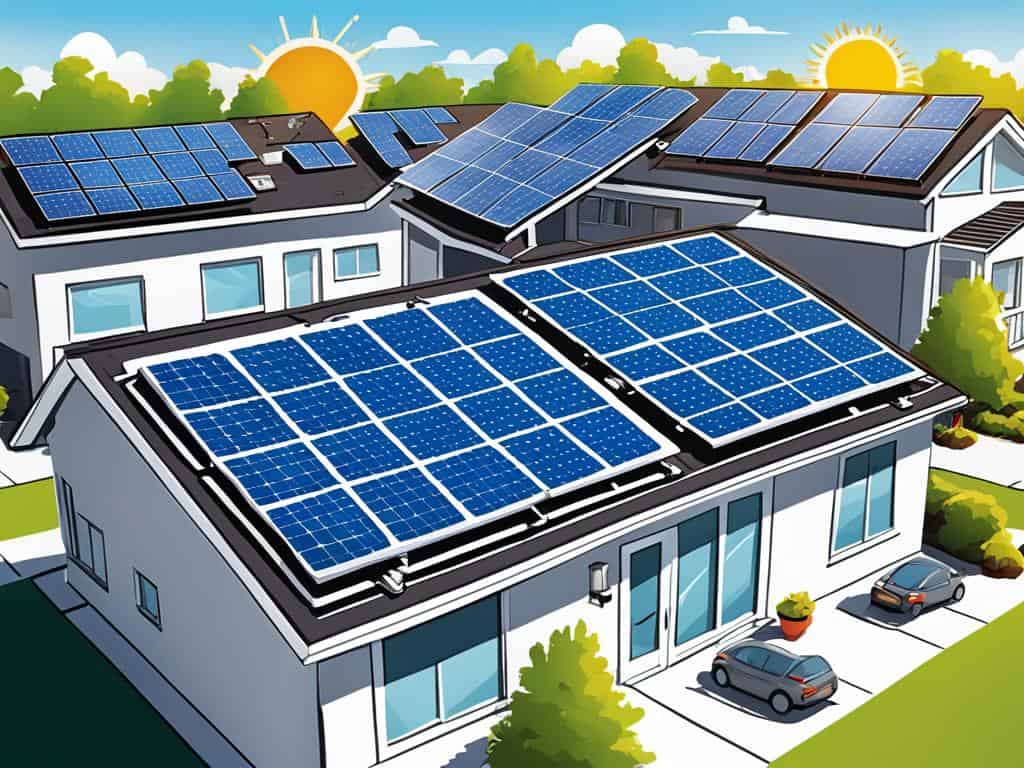Harness Solar Power for Sustainable Energy
Unleash the potential of solar power in India for a greener future. Discover sustainable energy solutions and embrace clean, renewable solar energy.

The search for sustainability in energy has always been crucial. Solar power shines brightly as a beacon of hope in this quest. Just a little while back, solar power made up a tiny fraction of the world’s energy use. Now, it’s growing fast, increasing by about 20 percent each year over the last 15 years. Japan, Germany, and the United States are leading this change. In these countries, solar power is becoming a key energy source.
In India, where the sun shines bright, there’s a big chance for change. Solar power here means more than just green energy. It’s also a wise financial move. Thanks to tax breaks and smart partnerships, solar projects can pay off in five to ten years. Fenice Energy is at the forefront, making solar energy a smart and achievable goal for a cleaner tomorrow.
Key Takeaways
- Solar energy’s growth captures a significant shift towards renewable energy in the global market.
- Financial incentives make solar installations an economically smart choice with a robust return on investment.
- Emergence of new markets for solar cells underscores the global movement towards clean energy.
- With its expertise and two-decade-long experience, Fenice Energy offers solutions that could herald a sustainable future for India.
- Renewable energy, especial solar power, is central to limiting carbon emissions and combating global warming.
- Technological advancements in solar panels are making them more efficient and cost-effective.
Role of Solar Power in Sustainable Development
India is leading a solar revolution, moving towards sustainable development. With the growing importance of solar power, it promises a greener, more sustainable future. It brings the hope of renewable energy into the spotlight.
The push for solar power supports the United Nations goal for clean energy for all. India is dedicated to using energy wisely and fighting climate change. Fenice Energy, with more than 20 years of experience, helps drive this change. They offer services that meet India’s need for clean and accessible energy.
The growth of solar technology is key to increasing energy security and helping the environment. It lowers the country’s carbon footprint and supports economic growth. Solar energy ensures we can develop without harming our planet.
Fenice Energy is committed to enhancing India’s sustainable energy future. Their high-quality solar solutions are a big part of India’s shift to a greener energy system.
This shift extends beyond just the energy sector. For example, at Ashoka University, over 45% of students get financial aid. This exceeds local law requirements and shows a commitment to sustainable and inclusive policies. It mirrors the values behind renewable energy.
Solar energy plays a big role in advancing society. Efforts by states and businesses to promote sustainability show that. Energy and education might seem different, but they unite in the goal of sustainability. This is a goal India is achieving by embracing solar power.
Environmental Impact of Solar Power
Solar energy is key in fighting climate change. It offers clean power with little harm to our planet. Unlike burning oil or coal, solar panels don’t pollute the air once they are up and running. Fenice Energy is all in on using eco-friendly solar solutions. They aim to power India in a way that’s good for nature.
Redefining Energy Production for Emissions Reduction
A single solar panel setup can make our earth much cleaner. It avoids hundreds of harmful chemicals coal plants release. Fenice Energy knows using solar can save a lot of money, around INR 75,000 yearly. This shows solar power is not just green but also saves green.
Saving Habitats with Non-Invasive Solar Farms
Solar farms can be set up without hurting nature. They can even help by providing land for grazing or for bees to pollinate. This helps keep the soil healthy and supports many kinds of pollinators. It’s all about protecting every form of life.
SETO-funded studies are looking at how solar power setups affect animals and plants. They’re making sure floating solar panels don’t harm water or the creatures living in it. The goal is to have solar energy that also cares for the environment.
| Environmental Aspect | Benefits of Solar Power | Current Research Focus |
|---|---|---|
| Emissions | Significant reduction in air pollution | Quantifying emissions prevention |
| Land Use | Avoids deforestation, preserves biodiversity | Assessing impact on wildlife and ecosystems |
| Water Resources | May reduce water usage in cleaning processes | Studying impacts of cleaning on arid ecosystems |
| Biodiversity | Can be paired with habitat conservation | Development of solar-pollinator habitat projects |
| Soil Health | Promotes soil conservation through dual land use | Monitoring soil conditions under solar arrays |
Solar Panels: Harnessing the Sun’s Energy
Solar panels change sunlight into electrical energy. This is key for sustainability and self-sufficiency. India benefits greatly from adopting solar technology, becoming a leader in solar innovation.
Here’s a fact: sunlight hitting Earth in 90 minutes could power the world for a year. Solar panels let us use this endless energy. This helps us avoid using up our fossil fuels.

Solar panels are now common on rooftops. They connect with electrical grids, combining old and new energy forms. This mix boosts our energy system’s strength, creates jobs, and grows the economy.
Fenice Energy aims to advance India using solar energy. They’ve seen its power for backup during the night and at both small and large scales. Flat-plate collectors, a solar panel type, offer different efficiency levels, making solar energy useful in various ways.
“Solar energy helps build a future where energy supply is secure, employment prospects are enriched, and the environment breathes easier.” – Fenice Energy
Besides electricity, solar panels heat water for homes and pools. They’re used in solar cookers and even Taiwan’s National Stadium. From daily use to grand projects, solar power’s versatility is clear. It leads the charge in renewable energy use worldwide.
- Solar energy systems must be thoroughly integrated into homes and businesses, ensuring a harmonious blend of traditional and renewable energy sources.
- Providing an innovative solution to energy needs, solar panels exemplify an essential component in building a resilient and sustainable electrical grid.
- Fenice Energy’s extensive experience in clean energy solutions spots the potential in solar panels to navigate India towards a thriving, solar-reliant nation.
Solar energy is the future, not just an alternative. It makes a world of endless, renewable energy possible. Fenice Energy helps turn this potential into reality, making solar energy fundamental to our future.
Advancements in Photovoltaic Technology
The world of photovoltaic technology advancements is changing fast. New research and innovations are setting the stage for better solar power. Fenice Energy leads in bringing these photovoltaic improvements to India. This helps make efficient solar solutions for its growing energy needs.
From Silicon to Perovskite – The Evolution of Solar Cells
Traditional silicon solar cells are common because they offer a good mix of cost and performance. But now, perovskite cells are starting a new chapter for solar materials. This change is pushing us towards using solar power more efficiently and maybe even cheaper.
Improvements in Energy Conversion Efficiency
Material science is making solar efficiency better. Combining perovskite with silicon is breaking new ground in energy conversion efficiency. This is moving photovoltaic technology forward. It’s making clean energy tech even more important for the future.
| Type of Solar Cell | Efficiency | Features | Manufacturing Cost | Stability |
|---|---|---|---|---|
| Silicon Solar Cells | ~25% | Good efficiency, prevalent use | Reasonably Priced | High |
| Thin-Film Solar Cells | Varies | Lightweight, flexible | Low | Medium |
| III-V Solar Cells | Up to ~50% (experimental) | High efficiency | Expensive | High |
| Perovskite Solar Cells | Up to 29.1% (tandem) | Excellent efficiency, potential low-cost production | Low (projected) | Over 95% efficiency after 1,000h |
| Transparent Solar Cells | Over 8% | Architectural integration | Undisclosed | Stable |
Fenice Energy is dedicated to adopting new photovoltaic technology advancements. They are making sure India moves to cleaner energy. This effort uses the latest and most reliable technologies available.
Cost-Effectiveness of Solar Energy
Solar power is quickly becoming a top choice compared to traditional energy sources. Fenice Energy is at the forefront, using new technologies to lower solar costs. This makes solar energy more affordable for both homeowners and businesses. The main benefits of solar include great returns on investment and long-term savings. That’s why solar energy discussions are now more common.
Understanding the Declining Costs of Solar Installations
Solar panel costs are dropping, thanks to advances in renewable energy. This means more people can afford solar panels. As solar technology gets better, the initial cost for systems is easier for families to handle. For example, solar systems in India are much cheaper than before. This price drop is helping solar energy become more popular.
Comparing Long-Term Savings with Conventional Energy Sources
The savings from solar energy, compared to traditional energy, are impressive. Solar energy means lower energy costs for many years. It’s also more predictable than fossil fuel prices. Savings from net metering and tax incentives help pay off the solar system faster.
The focus on solar energy has shifted towards its long-term financial benefits as technology improves. Here’s a detailed table showing the economics of solar energy:
| Aspect | Details |
|---|---|
| Average Energy Savings | Homeowners save an average of INR 14,52,000 over 25 years |
| Payback Period | Average payback period of 8.5 years |
| Monthly Energy Production | Residential setups can produce between 350 kWh to 850 kWh/month |
| Installation Costs in India | Typically ranges from INR 11,25,000 to INR 18,75,000 |
| Tax Incentives | Substantial tax credits, rebates, and breaks, depending on the state |
| Net Metering Benefits | Allows selling excess energy back to the grid, enhancing savings |
| Lifespan of Solar Panels | Approximately 25 to 30 years |
Choosing solar power is smart, both for the environment and your wallet. The numbers clearly show that solar can give homeowners big savings and independence from fossil fuel prices. Fenice Energy is dedicated to offering strong solar options. They help customers use the endless energy of the sun for a cleaner, more cost-effective future.
Solar Power Systems: Integration and Storage
The world is moving towards a sustainable future. It’s important to combine solar energy systems with powerful energy storage. This approach makes solar power more reliable, even when the weather changes.
By 2030, experts predict 80% of electricity could come through power electronics. This shines a light on the importance of integrating solar power with current grids. Because solar energy can be unpredictable, it’s vital to have strong energy storage solutions. They help balance the energy produced with what’s needed, ensuring a steady supply.
The rise of solar energy also means our grids must adapt to handle energy coming and going. Devices like inverters play a key role. They help solar power smoothly join the grid and boost its performance.
The National Renewable Energy Laboratory (NREL) plays a big role in optimizing solar energy systems. They offer data that helps with planning. This is crucial for building a system that works well everywhere.
Fenice Energy has been leading in solar for over 20 years. They know how to blend solar solutions with energy storage well. Their work on projects like the Alamosa Photovoltaic Plant shows their dedication to sustainable power supply.
The Department of Energy (DOE) is also helping. They’re funding new technologies to better predict and manage solar energy’s effect on the grid. The SEGIS program is a good example, where they’ve given money to help with grid integration.
There’s also a lot of funding to help understand solar power’s ups and downs in different conditions. This research looks at how it affects the grid. It also seeks to bring down costs and encourage the use of solar energy systems.
Hawaii is making big moves towards renewable energy by 2030. They’ve installed a big solar system with energy storage. It’s a clear example of these technologies at work in the real world.
In conclusion, combining solar power integration with energy storage solutions is key for a green energy future. Fenice Energy’s work shows we can have a reliable, sustainable energy supply looking ahead.

Solar Power: Feasibility and Accessibility in India
India aims to install 500 gigawatts (GW) of renewable energy by 2030. The importance of decentralized solar solutions in increasing energy access is huge. A strong connection exists between solar feasibility in India and bringing electricity to rural areas. This is helped by incentives for using solar and supportive government actions.
Decentralized solar solutions are key for helping rural and remote areas in India catch up. The SELCO Solar Energy Access project is one example. It works to improve life for the poorest households by providing solar products. This effort not only helps bring electricity to rural areas but also boosts local economies. For example, Vinod Bagilovayl, who owns a bike garage, saw his income jump after he started using solar energy.
Bridging the Energy Divide with Decentralized Solar Solutions
The world has over 1,000 GW of solar power on the ground. Yet, India is just starting to explore floating solar power, which could add 280-300 GW. Floating solar is more expensive now but renewable energy initiatives like Fenice Energy’s could change that. They’re working towards a greener future by finding alternatives to coal.
Government Incentives and Policies Promoting Solar Adoption
The Indian government is encouraging the use of solar energy through solar subsidies and policies. These efforts aim to make solar options more attractive to people and companies. With the help of government policies, bank support, and microfinance, making energy fair for all is closer to reality.
Fenice Energy is helping to lead this change with clean energy solutions that match India’s goals. They work with financial groups to make sure even the poorest can afford clean energy. This supports the country’s goals for sustainable growth and energy safety.
The Ecological Advantages of Embracing Solar Power
The journey towards clean energy, powered by solar technology, promises a better, greener future. It shows how using the sun’s power helps stop environmental harm and benefits us. Fenice Energy is at the forefront, showing how solar energy is key to sustainable development. They highlight how solar power is becoming a major part of renewable energy’s success.
| Year | Solar Photovoltaic (PV) Capacity (MW) | Concentrated Solar Power (CSP) Capacity (MW) |
|---|---|---|
| 2010 | 40,334 | 1,266 |
| 2020 | 709,674 | 6,479 |
Solar energy has seen incredible growth, especially from 2005 to 2018. It’s crucial for sustainable, low-carbon energy and meeting global climate goals. This shows Fenice Energy’s dedication to a strong, clean energy future.
- A 1% drop in global CO2 emissions from power in 2019 showed that we can generate energy with less pollution, highlighting renewable energy’s benefits.
- In 2020, global events helped reduce emissions by 7%, showing how renewables can make a big difference in our energy system.
- By 2050, solar energy might make up 48% of the world’s energy, changing how we power our lives and supporting green policies.
The stats aren’t just numbers; they’re signs of the clean energy era starting now. They show how solar power saves our resources and stands up to oil and gas companies. With experts like Fenice Energy leading, solar energy promises a hopeful, green future.
Conclusion
India is making big strides towards a sustainable energy future. The benefits of solar power show a big change in society. Every day, the Earth gets about 173,000 terawatts of solar energy, which is way more than we need.
The Bhadla Solar Park in Rajasthan is a huge step forward. It covers 10,000 acres and has a capacity of 2,245 megawatts. This park shows India’s big commitment to renewable energy.
Moving to clean energy is not just about making energy. It’s also about green growth and taking care of our planet. Fenice Energy is leading the way by creating solutions like efficient solar installations.
They’re helping meet the need for more solar power. By 2050, we hope to see a zero-carbon grid and 1.5 million new jobs in solar. This change is good for both our economy and the environment.
Using solar energy is key to a healthier planet. We could get nearly half our electricity from solar by 2050. This would also cut CO2 emissions by 62%.
It’s important to support the increase of solar deployment rates. Fenice Energy’s work helps us reach these goals. By using solar power, we save money and protect the environment.
So, solar power is essential for a country’s sustainable future. It’s not just a choice; it’s a necessity for taking care of our planet.


